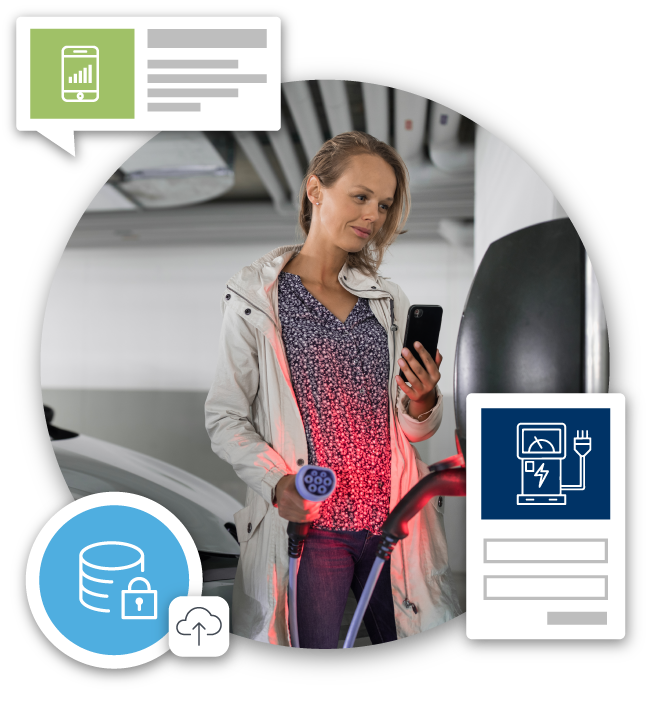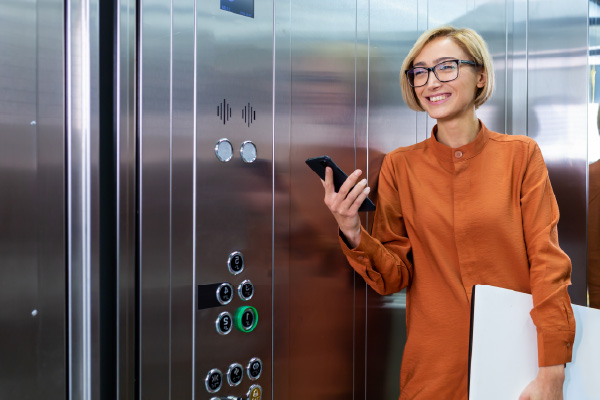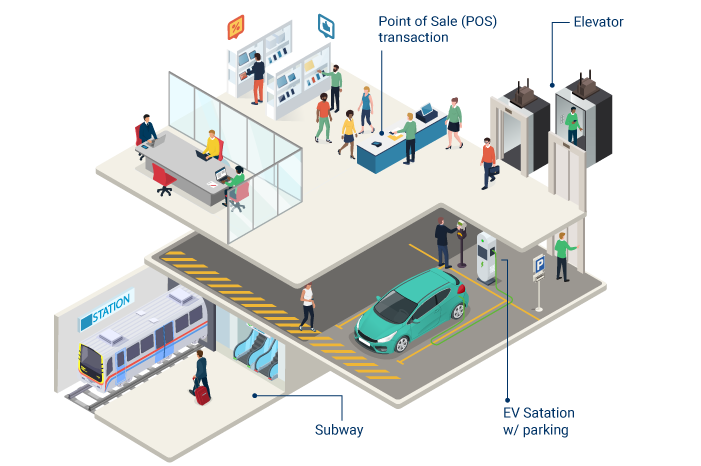

91% of adults with cellphones say that their phone make them feel safer.* (Pew Research)

With full coverage – “stairs or elevator?” becomes an easy choice. Both are more secure when we can make a call or stay on the line with friends or family when walking alone.

Speed transactions and provide peace of mind by keeping equipment, payment kiosks, lighting, and occupancy sensors all online and functioning well. Well managed parking areas boost the surrounding businesses.

EV charging stations need a signal to track data, set schedules, and charge users for electricity. The charger, the vehicle, and the grid all need to connect for the system to work properly. Cellular connectivity has proven to be one of the most reliable and robust means to connect EV stations due to the quality of the public macro network available from MNOs through the air.
Nextivity off-air CEL-FI cellular coverage solutions bring the power of the macro network to where you need it. We will solve your EV station connectivity issues quickly and with little interruption to your business. Nextivity CEL-FI intelligent boosters provide clean, strong signals in hours and days – not weeks and months, with no operator agreements. Our systems are able to provide better quality signals than standard dumb repeaters because they are unconditionally network safe and we boost each operator’s signal independently, for maximum coverage – all at the lowest cost per area.

Everyday we get calls about elevators – maybe you do too…
Elevators are one of the most challenging spaces to deliver cellular connectivity, but the combination of Nextivity’s best-in-class equipment, experience, and skilled partners has you covered.
From delivery people, to visitors, to residents, to employees moving between floors in their office, dropped calls in elevators are annoying and a drain on productivity. Imagine being able to move throughout a property without a call dropping anywhere. Additionally, having cellular coverage in elevators ensures someone can call out or be reached during an emergency when people may be stuck.
Local ordinances vary as do the way elevators operate and are installed. We are familiar with the ins and outs (and ups and downs) and will work with your elevator manufacturer and local authorities to ensure we are providing the best coverage, at the best price, while adhering to code.

Case Study
Lomo freegan edison bulb praxis Brooklyn. Big mood cupping blue bottle hashtag. Kinfolk DIY austin lo-fi, waistcoat cornhole photo booth kitsch vice scenester jawn wayfarers wolf food truck. Heirloom irony same neutra DSA, ramps letterpress lyft swag meggings 3 wolf moon venmo. Franzen banh mi big mood food truck ennui farm-to-table tattooed.

Case Study

Case Study
Poke you probably haven’t heard of them YOLO messenger bag. Slow-carb dreamcatcher blue bottle single-origin coffee butcher williamsburg umami DIY meggings salvia jawn chambray fingerstache offal cold-pressed. Lomo freegan edison bulb praxis Brooklyn.
Get in touch with a Nextivity expert and we’ll help you figure out how to bring a strong reliable signal to your parking structure, elevator, EV charging stations, or other drive-up or pedestrian area.
If you are a Nextivity Partner, please log into the Partner Portal for assistance or use this form if you are not able to log into the portal.
Keeping people connected through the world’s smartest cell phone signal boosters, public safety communication systems, private networking solutions, and HPUE devices. Powered by proprietary IntelliBoost® technology.
16550 West Bernardo Drive
Building 5, Suite 550
San Diego, CA 92127
+1 (858) 485-9442
[email protected]
©2024 Nextivity, Inc.